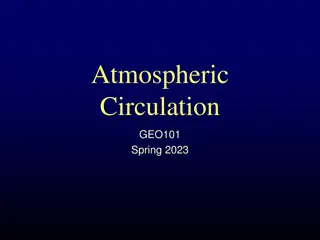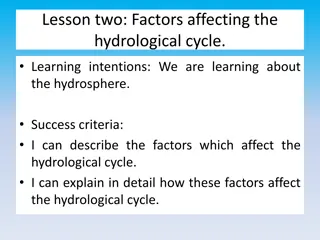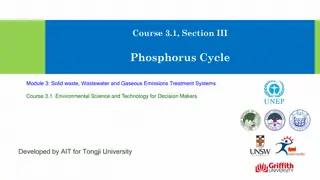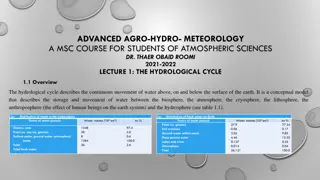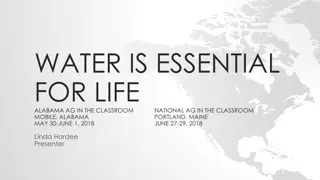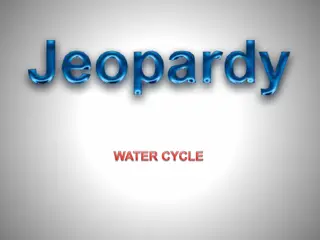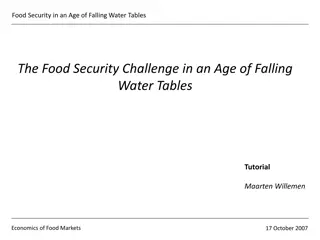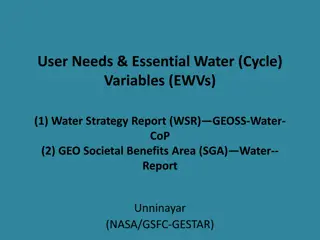Understanding the Water Cycle and Its Importance in Nature
Water is essential for all life on Earth, continuously moving through different physical states in a cycle that has been occurring for over 4 billion years. The Water Cycle involves processes like evaporation, transpiration, condensation, precipitation, and collection, ensuring water is always moving and replenishing sources like groundwater. Groundwater, a filtered water source crucial for plants and human use, plays a significant role in sustaining life and agriculture.
Download Presentation

Please find below an Image/Link to download the presentation.
The content on the website is provided AS IS for your information and personal use only. It may not be sold, licensed, or shared on other websites without obtaining consent from the author. Download presentation by click this link. If you encounter any issues during the download, it is possible that the publisher has removed the file from their server.
E N D
Presentation Transcript
Chapter 1: Water is Essential for All Life The global impacts of how we use water Lesson 2 The Water Cycle
States of water vapour solid liquid Water is always moving between different physical states of liquid, gas/vapour & solid/frozen for over 4 billion years, i.e. The Water / Hydrological Cycle
The Water Cycle The Water Cycle Task 2.1
Water is always moving between different physical states Evaporation: Sun heats up the water in rivers, lakes and land and turns into water vapour in the atmosphere. Transpiration: When plants absorb water from the soil, the water moves up the stem to the leaf where it then evaporates from the leaf. Condensation:Water vapour cools as it rises (convection) and collects in clouds, as it condenses it turns into droplets. Precipitation: When the clouds get big and heavy with water droplets fall to earth as rain, snow or hail. Collection: Water is stored in a variety of places: oceans, lakes, glaciers, snow caps, rivers and groundwater. Task 2.2
Water is always moving Overland Flow: After snow melts or rain, the water flows over land and into streams and rivers. Groundwater: Water that seeps down (percolates) through the soil and collects beneath the earth s surface. Source: US Geological Survey
What is groundwater? The water that is filtered through the soil and is available to plants. It is a major source of drinking water and agriculture irrigation. Freshwater Source: US Geological Survey
Watch The Water Cycle video The water cycle | Weather and climate | Middle school Earth and space science | Khan Academy YouTube





